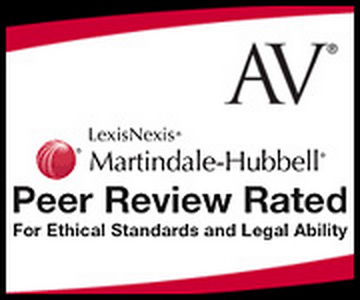Every day, potential clients come to find out how to protect their assets from potential creditors and lawsuits. Nevada law offers many “free” exemptions under NRS 21.090. However, many assets are still vulnerable such as non-homesteaded real property, bank accounts and investments. Fortunately, Nevada also offers other options for helping to safeguard these exposed assets.
Once risks and areas of exposure have been identified and the potential protection strategies have been carefully explored, a cost vs. benefit analysis should then be conducted before finally deciding which asset protection strategies to employ.
Two of the most widely used Nevada asset protection structures are the Nevada Limited Liability Company (LLC) and the Nevada Asset Protection Trust (NAPT).
Nevada LLC
A limited liability company formed in Nevada offers excellent domestic protection. Most practitioners agree that Nevada offers some of the most favorable corporate laws in the country. Some of the pros of a Nevada LLC are:
- Nevada’s statues generally favor businesses;
- The organizational requirements are quite informal- no annual meetings or minutes are necessary;
- LLC’s are flexible structures that can be used in many different ways- to own property, to manage an operating business and to hold liquid assets;
- LLC’s can be taxed in four different ways: as a disregarded entity, a partnership, an S-Corp or a C-Corp;
- Nevada, unlike many other states, has no state income tax or corporate tax; and
- Nevada LLC’s can be structured to maximize privacy and anonymity.
Perhaps most importantly, the members’ interests cannot be attached by a creditor. The only remedy against a member is to obtain a “Charging Order” allowing the creditor to lien or “charge” the member’s profit distribution rights when, or if, a distribution is made by the member of the LLC. As such, assets within the LLC are safe but trapped.
Nevada Asset Protection Trust
Nevada Asset Protection Trusts (NAPT) were created by The Nevada Spendthrift Trust Act, NRS 166.010 et seq. in 1999. Nevada is one of just a handful of states that provide a Trust of this sort.
This unique law lets an individual create a valid Grantor Trust where he or she is both the Trustee, the person who controls the Trust assets, and the beneficiary, while the assets within the Trust remain protected from creditors. Unlike many other states with similar laws, the Trust creator does not need to be a Nevada resident to create a NAPT. Additionally, any category of asset such as real property, personal property or liquid assets in any location can be protected with a NAPT.
NAPTs work in the following manner: By law, the Trust prohibits the assignment, alienation, acceleration and anticipation of any interest of the beneficiary under the Trust by the voluntary or involuntary act of the beneficiary or by operation of law or any process. Payments by the Distribution Trustee, a third party who has discretion to make distributions, are made only to the beneficiary who can also be the person establishing the Trust. The Trustee of a Spendthrift Trust is required to disregard and defeat every assignment or other act, voluntary or involuntary, that is attempted contrary to the provisions of the Nevada Spendthrift Act.
Some of the benefits of the Nevada Asset Protection Trust are:
- You keep control of your assets;
- You may receive the full benefit and use your own assets;
- You don’t need to give away your assets;
- You can protect any type, and an unlimited amounts, of assets from creditors;
- The Nevada Asset Protection Trust is less expensive to form and maintain and much less complex than foreign or offshore Trusts which are often troubled by IRS audits and complicated tax reporting requirements;
- The Nevada Asset Protection Trust may avoid loss of the assets through a bankruptcy; and
- The Nevada Asset Protection Trust can be integrated with your estate plan (remember, a “Living” or “Family” Trust does NOT provide the creditor protection benefits discussed above).
With all of its benefits, there are some disadvantages to an NAPT. If the Grantor of the Trust is also a beneficiary, a third party Distribution Trustee must serve as well, which means that the Grantor does not have absolute discretion. Additionally, there is a two-year seasoning period. If a creditor is a current creditor when the transfer of the asset to the NAPT occurs, the creditor must bring suit against the property transfer within two (2) years of the transfer or within six (6) months after the creditor discovers, whichever is later. After the seasoning period is over, the creditor is barred from bringing suit to recover said property.
Both of these techniques, amongst others, can be extremely useful in protecting assets and providing peace of mind in our volatile economy.
Tiffany N. Ballenger, Esq.


 Nevada requires that a deed of trust be used to secure a real estate loan. Although commonly referred to as a mortgage, a deed of trust has significant differences from a mortgage. In addition, states using deeds of trust differ among themselves in their requirements.
Nevada requires that a deed of trust be used to secure a real estate loan. Although commonly referred to as a mortgage, a deed of trust has significant differences from a mortgage. In addition, states using deeds of trust differ among themselves in their requirements. A common tool used to avoid probate is to own a bank account jointly with the right of survivorship held by a family member or friend. Bank accounts held jointly with the right of survivorship avoid probate because, upon death of a co-owner of the account, the funds in the account immediately transfer ownership to the surviving account holder. However, before adding a child or family friend to a bank account, be aware that if the person added to the account files for bankruptcy, the funds held in such joint bank account could be seized by the Bankruptcy Trustee.
A common tool used to avoid probate is to own a bank account jointly with the right of survivorship held by a family member or friend. Bank accounts held jointly with the right of survivorship avoid probate because, upon death of a co-owner of the account, the funds in the account immediately transfer ownership to the surviving account holder. However, before adding a child or family friend to a bank account, be aware that if the person added to the account files for bankruptcy, the funds held in such joint bank account could be seized by the Bankruptcy Trustee. Fannie Mae announced this week that it will begin monitoring all delinquent loans in its portfolios and backed-securities to guarantee that servicers comply with foreclosure time frames. Fannie Mae currently monitors the progress of the foreclosure process by reviewing delinquent loans at the first of the month. If Fannie Mae believes there is a delay in completing the foreclosure process, and the servicer is unable to provide a reasonable explanation for the delay, Fannie Mae may require the servicer to pay a compensatory fee. This fee will not only reimburse Fannie Mae for damages but emphasizes the importance of foreclosing on delinquent loans in a timely manner.
Fannie Mae announced this week that it will begin monitoring all delinquent loans in its portfolios and backed-securities to guarantee that servicers comply with foreclosure time frames. Fannie Mae currently monitors the progress of the foreclosure process by reviewing delinquent loans at the first of the month. If Fannie Mae believes there is a delay in completing the foreclosure process, and the servicer is unable to provide a reasonable explanation for the delay, Fannie Mae may require the servicer to pay a compensatory fee. This fee will not only reimburse Fannie Mae for damages but emphasizes the importance of foreclosing on delinquent loans in a timely manner. Between thirty (30) and forty (40) days after filing your bankruptcy petition, the randomly assigned Chapter 7 Trustee will hold a meeting of creditors. During this meeting, the debtor is placed under oath and the Chapter 7 Trustee along with any creditors that attend may ask questions regarding your bankruptcy petition.
Between thirty (30) and forty (40) days after filing your bankruptcy petition, the randomly assigned Chapter 7 Trustee will hold a meeting of creditors. During this meeting, the debtor is placed under oath and the Chapter 7 Trustee along with any creditors that attend may ask questions regarding your bankruptcy petition. The federal government provided new Home Affordable Modification Program (HAMP) outreach and communication guidelines for foreclosure actions while evaluating the borrower. These guidelines provide additional protection for delinquent borrowers who have filed bankruptcy but would otherwise be eligible for HAMP benefits. Some key highlights from the directive include:
The federal government provided new Home Affordable Modification Program (HAMP) outreach and communication guidelines for foreclosure actions while evaluating the borrower. These guidelines provide additional protection for delinquent borrowers who have filed bankruptcy but would otherwise be eligible for HAMP benefits. Some key highlights from the directive include:




